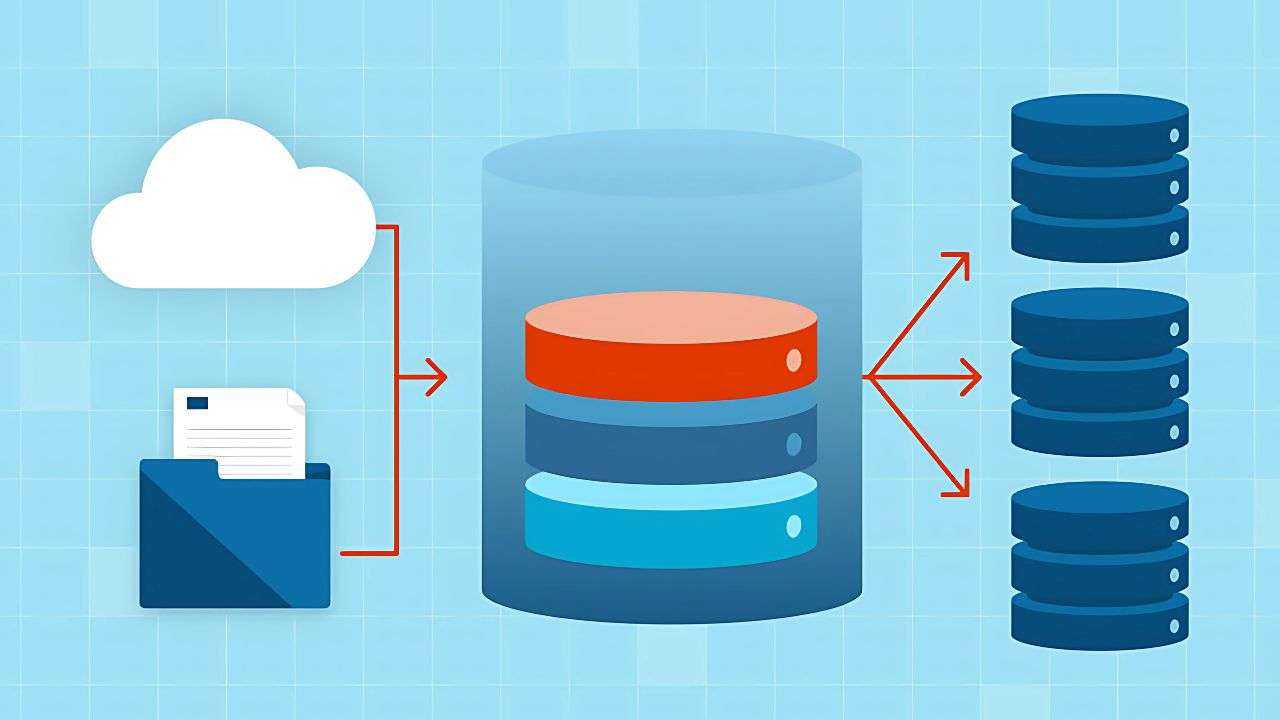In today’s data-driven world, a data warehouse is not just a tool—it’s a necessity. Organizations rely on data warehouses to consolidate, analyze, and derive actionable insights from vast amounts of data. This guide takes you step-by-step through the process of building a data warehouse tailored for data mining. Whether you’re a beginner or seasoned professional, you’ll find everything you need here.
What is a Data Warehouse in Data Mining?
- Definition of a Data Warehouse:
A data warehouse is a centralized repository designed for querying, analyzing, and reporting on data. Unlike transactional databases optimized for day-to-day operations, data warehouses store historical data and support decision-making. - Role in Data Mining Processes:
Data mining involves extracting patterns and knowledge from large datasets. A data warehouse provides the structured, high-quality, and consistent data required for effective mining. It acts as the backbone for machine learning models, analytics, and reporting tools. - Differences Between a Data Warehouse and Operational Databases:
- Operational databases handle real-time transactions; data warehouses store historical data.
- Databases prioritize speed and efficiency for CRUD operations (Create, Read, Update, Delete), while data warehouses focus on analytical queries.
Key Benefits of Building a Data Warehouse
- Improved Data Quality and Consistency:
By integrating data from multiple sources, a data warehouse ensures standardized formats, removing duplication and inconsistencies. - Enhanced Decision-Making Capabilities:
Centralized access to well-organized data enables faster and more accurate business insights. - Scalability for Growing Data Needs:
Data warehouses can grow to accommodate larger datasets as organizations expand. - Better Support for Advanced Data Mining Algorithms:
A structured data warehouse simplifies feature engineering and enables efficient algorithm implementation.
Essential Components of a Data Warehouse
- Data Sources:
Data originates from various sources, such as CRM systems, ERP software, IoT devices, and social media. - ETL (Extract, Transform, Load) Processes:
ETL pipelines extract raw data, transform it into usable formats, and load it into the warehouse. - Storage Architecture:
- Star Schema: A central fact table linked to dimension tables.
- Snowflake Schema: Dimension tables are normalized, creating a more complex but space-efficient structure.
- Metadata Repository:
Metadata describes the data structure, origin, and transformation rules, making it easier for users to understand the stored data. - Query and Reporting Tools:
Tools like Power BI, Tableau, and Looker provide intuitive dashboards and visualizations.
Step-by-Step Process to Build a Data Warehouse
1. Define Objectives and Goals:
- Determine the purpose of the data warehouse (e.g., sales analytics, customer behavior analysis).
- Identify key stakeholders and their expectations.
2. Data Modeling and Schema Design:
- Choose a schema based on your needs (star, snowflake, or hybrid).
- Define facts (quantitative data) and dimensions (contextual attributes).
3. Selecting ETL Tools and Platforms:
- Evaluate ETL tools like Talend, Informatica, or Apache Nifi based on cost, scalability, and features.
- Consider cloud-based solutions (e.g., AWS Glue or Azure Data Factory) for flexibility.
4. Data Integration and Transformation:
- Cleanse and standardize data to ensure accuracy.
- Perform data transformations, such as aggregations, filtering, and formatting.
5. Implementation and Testing:
- Load data into the warehouse in small batches to test performance.
- Validate the accuracy and completeness of data using sample queries.
6. Performance Optimization and Maintenance:
- Use indexing and partitioning to improve query speed.
- Schedule regular updates and backups to ensure data reliability.
Common Data Warehouse Architectures
- Single-Tier Architecture:
Combines all components in one layer. Simple but not scalable. - Two-Tier Architecture:
Separates data storage from application layers. Offers better scalability. - Three-Tier Architecture:
Adds a presentation layer for visualization and reporting. Most commonly used. - Cloud-Based Data Warehouses:
Examples: Amazon Redshift, Google BigQuery, and Snowflake. They offer scalability, reduced costs, and easy integration.
Tools and Technologies for Building a Data Warehouse
- Popular ETL Tools:
- Talend: Open-source tool for seamless data integration.
- Informatica: Enterprise-grade solution for complex data pipelines.
- Apache Nifi: Simplifies real-time data flows.
- Data Warehousing Solutions:
- Amazon Redshift: Cloud-based and scalable.
- Snowflake: Highly flexible, with separate compute and storage layers.
- Google BigQuery: Ideal for handling big data analytics.
- Visualization and Analytics Tools:
- Tableau: Drag-and-drop visualizations.
- Power BI: Affordable and tightly integrated with Microsoft products.
Best Practices for Data Warehouse Development
- Ensure Data Governance and Compliance:
Implement policies to protect sensitive information and comply with regulations like GDPR or CCPA. - Optimize ETL Processes:
Use incremental updates to avoid reloading the entire dataset. - Implement Security Measures:
Encrypt data and limit access to authorized users only. - Regularly Monitor and Update Performance:
Conduct audits to identify bottlenecks and areas for improvement.
Challenges in Building a Data Warehouse and How to Overcome Them
- Data Silos and Integration Issues:
Solution: Use robust ETL tools to merge disparate datasets. - Managing Large Volumes of Data:
Solution: Leverage scalable cloud storage solutions. - Budget Constraints:
Solution: Start with open-source tools and scale up as required. - Ensuring Scalability and Flexibility:
Solution: Design the architecture with future growth in mind, using modular components.
Future Trends in Data Warehousing for Data Mining (2024)
- Rise of Cloud-Native Data Warehouses:
Cloud solutions are becoming the default choice due to cost efficiency and flexibility. - Integration of AI and Machine Learning:
Tools like AutoML are making data mining faster and more accessible. - Emphasis on Real-Time Data Processing:
As businesses demand real-time insights, data warehouses are evolving to handle streaming data efficiently.
Conclusion
Building a data warehouse is a game-changer for organizations looking to harness the power of data mining. From improved data quality to enhanced decision-making, the benefits are transformative. By following the outlined steps, leveraging the right tools, and adhering to best practices, you can create a robust data warehouse tailored to your needs. Start planning today and take a step toward smarter, data-driven decisions.
Read Also:
Snowflake Data Warehouse or Data Lake: Which Is Right in 2025
